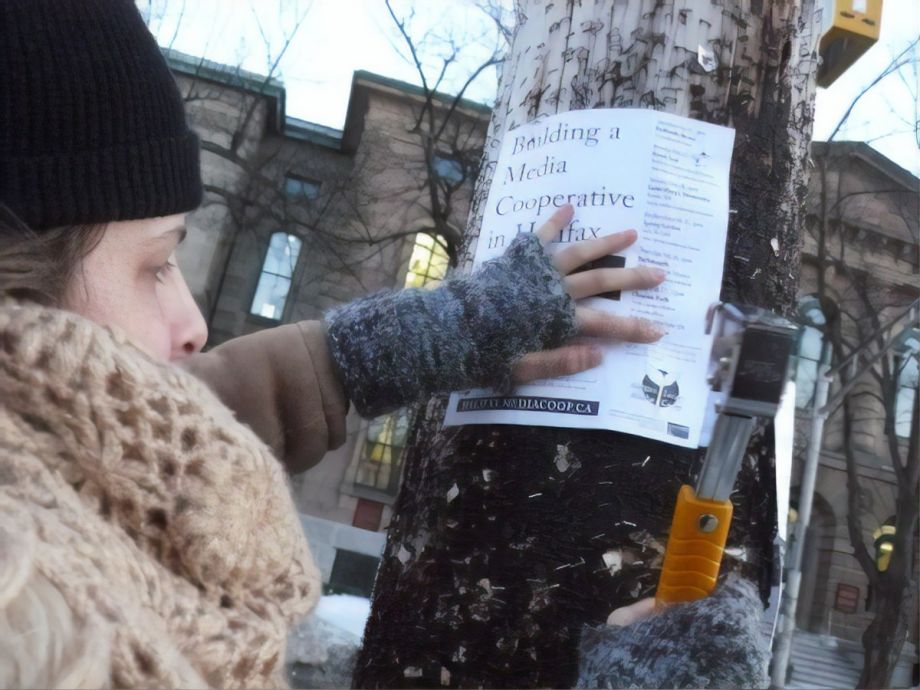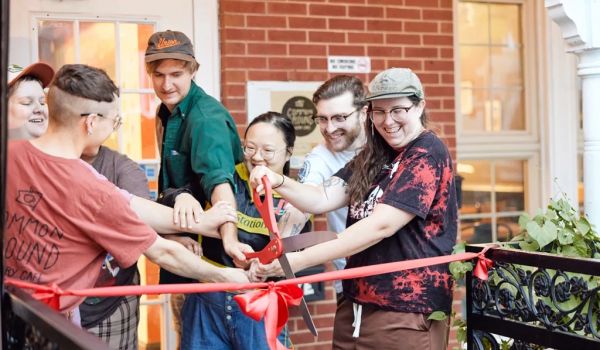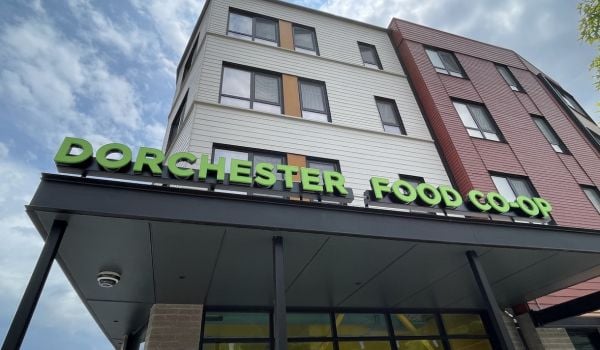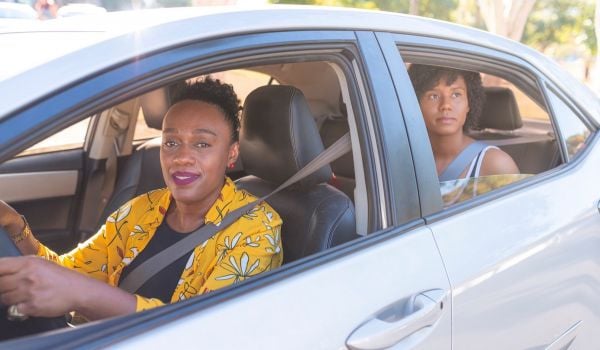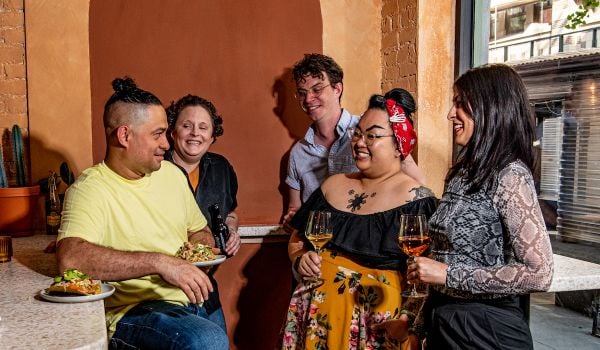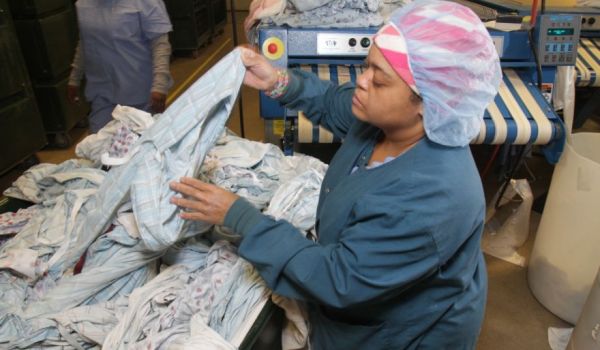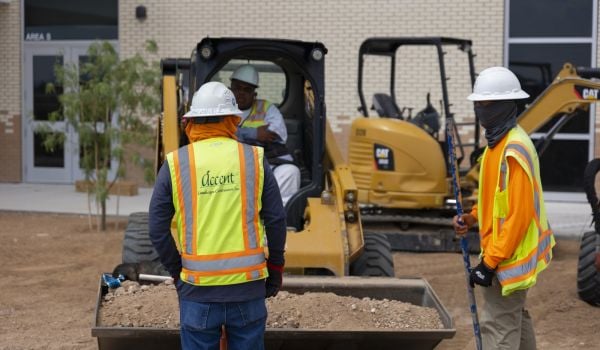The journalism landscape has transformed dramatically since the turn of the millennium when more than 400,000 people were employed at newspapers in the US. By September 2016, less than half that number remained employed, and over the first five months of this year, some 3,000 news workers lost their jobs, too. Roughly 1,800 newspapers shut their doors between 2004 and 2018, according to a University of North Carolina study. The impact on local journalism, which has seen tech giants gobble up 77 percent of local digital advertising, can’t be overstated. A trio of academics have even published a study on the consequences of this loss on local governments: municipal borrowing costs increase because no one is acting as a watchdog, which increases risk. The Nieman Lab reports that only 16 percent of Americans are willing to pay for online news.
People across the country are scrambling to develop sustainable models to fund local journalism.
In the Bay Area, Berkleyside has taken a capitalistic approach to its fundraising through a Direct Public Offering. Businesses can use a Direct Public Offering, or DPO, to raise capital by offering the public a chance to buy a share of the company. The DPO allowed California residents to purchase preferred stock with a minimum investment of $1,000. This was the first time a local news organization had used this financing strategy, following the path of companies like Ben & Jerry’s. Berkeleyside launched the DPO in 2016 and spent two years raising capital. Over those two years, the outlet reached out to potential investors by creating a website dedicated to explaining the DPO process, running marketing campaigns, holding house parties, and mentioning the DPO in the stories it published.
In 2018, the publication reached its goal. It had raised $1 million from 355 readers.
Berkeleyside publisher and co-founder Lance Knobel says the sum raised “gave us money to invest, which was very important to us, to hire more journalists, invest in our membership program and things like that, and it also gave us the breathing room to work towards sustainability, and we’ve made very, very good strides.”
The decision to make a direct public offering came after seven years of “bootstrapping,” Knobel says. “We were always absolutely on the edge. We needed that capital to meet payroll,” Knobel says. That capital has given Berkeleyside the breathing room to focus on what the publication sees as the key to its success: serious journalism.
Along with the DPO, Berkeleyside’s income follows a “three-legged stool” model. The site brings in revenue from members, runs an annual festival and sells advertising. The site currently has more than 2,600 members. In 2016, Nieman Lab reported that roughly 1,200 Berkeleyside members paid an average of $70 per year. Now, Knobel says the average contribution is $83 per year. But, he says “anyone who gives us even $1 is a member.”
It’s worth noting that while Berkeleyside is a for-profit corporation, it is a Benefit Corporation, or B-Corp. B-Corps exist to benefit both shareholders and stakeholders: workers, the community, the environment and society.
Knobel acknowledges that Berkleyside can tap into Bay Area wealth, but suggests that the publication’s primary strategy focuses on building its membership base, an approach any outlet can take. Staying financially solvent as a news organization, he says is “always going to be a struggle.” Still, Knobel says that by producing solid journalism and engaging readers through a combination of comments, social media and events — including open-office invites and coffee-shop chats — Berkeleyside has been nurturing the kinds of relationships that he hopes will sustain it over time.
The Lens, an investigative news outlet in New Orleans, has taken a similar approach. Karen Gadbois, co-founded the Gulf Coast investigative news outlet a few years after Hurricane Katrina, when foundation money was pouring into the Gulf Coast. When that stream began to dry up, Gadbois says the site “went back to basics” and began focusing on “reinforcing old relationships, cultivating new ones and looking for future relationships while continuing to produce news with an impact.”
The Lens won three first-place awards from the New Orleans Press Club this year. In 2014, the site won regional and national Edward R. Murrow awards for its “Losing Ground” series about coastal land loss, which was produced in collaboration with ProPublica.
But staying afloat hasn’t been easy. In late August, Gadbois told Next City that her publication is finalizing a new partnership with a for-profit outlet and continues to seek other collaborations. The Lens has worked with WWNO, New Orleans NPR affiliate and WVUE, a local Fox network station. Such cooperation has created opportunities for synergy and expanded the small team’s reach.
Gadbois says “There is no one model for non-profit newsrooms. There are many, and putting together a plan that works for your own needs is key.”
This is exactly what The Media Co-op did in Canada. Dru Oja Jay helped co-found the cooperative. “We quickly realized that the producer/consumer model of media production was A) on its way out and B) not for us,” he says. This realization led the group to decide that adopting a cooperative business model, shared between readers, contributors and editors, was the best path forward. Since then, The Media Co-Op launched a site where anyone could post, but stories “featured” on the site had been checked and approved by editors. Stories that had not been editor approved were marked to indicate this.
The Media Co-op had local cooperative groups in Halifax, Montreal, Toronto and Vancouver, but according to its website, only the Montreal and Toronto co-ops are currently operating. Oja Jay says the co-op is currently preparing to relaunch, but he noted that the co-op’s centralized site contains an archive of some 30,000 posts from the different cities’ local groups. “We unleashed a tremendous amount of energy,” Oja Jay says, “and we shaped the national discourse on a number of issues.”
Jo Ellen Green Kaiser published an analysis of media cooperatives confirming that many of The Media-Co-op’s “‘citizen journalism’ pieces fed into high-impact reporting on the tar sands, the G20, mining issues and Canadian foreign policy.” 700 paying members supported this work at the co-op’s zenith, each contributing at least $15 per year. Green Kaiser says, this belies a fundamental issue. “Even in Canada, consumers don’t join a media organization because of the opportunity to participate in governance,” she wrote in her analysis. She also found that because co-op workers were essentially volunteers, they burned out.
The Banyan Project is hoping to avoid the same fate. A nonprofit that advocates applying the consumer co-op model to local news, the organization is raising money to seed news co-ops around the U.S. Their pilot project, Haverhill Matters, is an embryonic news cooperative based in Haverhill, Massachusetts. Haverhill Matters will employ paid staff and use reader feedback to ensure that the news reflects community concerns. Tom Stites, founder of the Banyan Project, has been advising Haverhill Matters’ board during this start-up phase. Stites says The Banyan Project aims to deliver journalism that “readers will experience the journalism as relevant to their lives, respectful of them as people, and worthy of their trust.”
Under this cooperative model, Stites says readers will be asked to become members when they want to comment on a story. At that point, they will be asked to make a financial contribution of $60. Stites says there will be a 90-day, “provisional” membership option so that people can test it out, as well as a discounted membership fee of $36 for low-income community members.
Initially, Stites says the plan was to recruit 500 people from Haverhill’s population of 62,000 to contribute $250 to launch the publication. “We have stolen the model of food co-ops,” Stites says of this financing model.
But the project has been slow to lift off, in part, Stites says, perhaps in part because it has relied entirely on volunteer outreach.
“The way we have now set up the start-up process is the volunteers have to sign up 100 people to pledge $250 each. That has been horribly difficult. So, we backed it off to 50 people pledging $250,” Stites says. His plan is that once the grassroots capitalization has reached that $12,500, the co-op will receive a $25,000 match from The Banyan Project.
Oja Jay acknowledges that Facebook and Medium took some of the wind out of The Media Co-op’s sails, but he is optimistic about the future. “I think the limitations of those big-data platforms is really starting to show itself, and people are really becoming disillusioned, so I think there’s another window opening up again for that kind of [cooperative] platform.”

Zoe Sullivan is a multimedia journalist and visual artist with experience on the U.S. Gulf Coast, Argentina, Brazil, and Kenya. Her radio work has appeared on outlets such as BBC, Marketplace, Radio France International, Free Speech Radio News and DW. Her writing has appeared on outlets such as The Guardian, Al Jazeera America and The Crisis.
Follow Zoe .(JavaScript must be enabled to view this email address)

